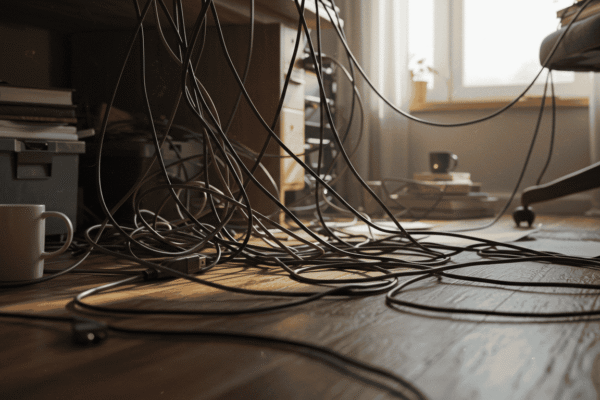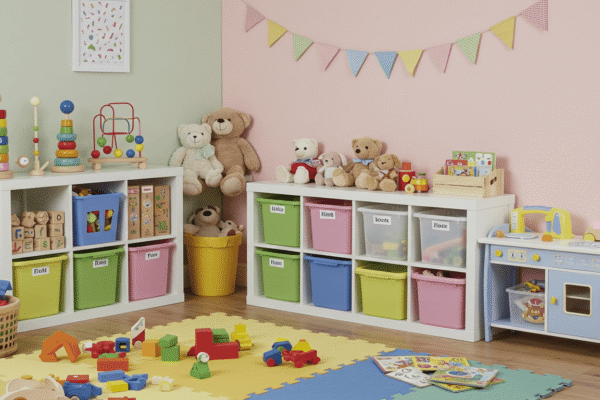Home repairs are an essential part of keeping your house safe, comfortable, and valuable. Whether you’re dealing with a dripping faucet, a cracked wall, or routine maintenance, knowing how to handle home repairs can save you both time and money. This ultimate guide will walk you through practical tips, smart tools, and cost-effective techniques to tackle common repairs confidently — without feeling overwhelmed or breaking the bank. Get ready to take control of your home maintenance and keep your living space in top shape!
Why Home Repairs Matter: Saving Money and Preventing Bigger Problems
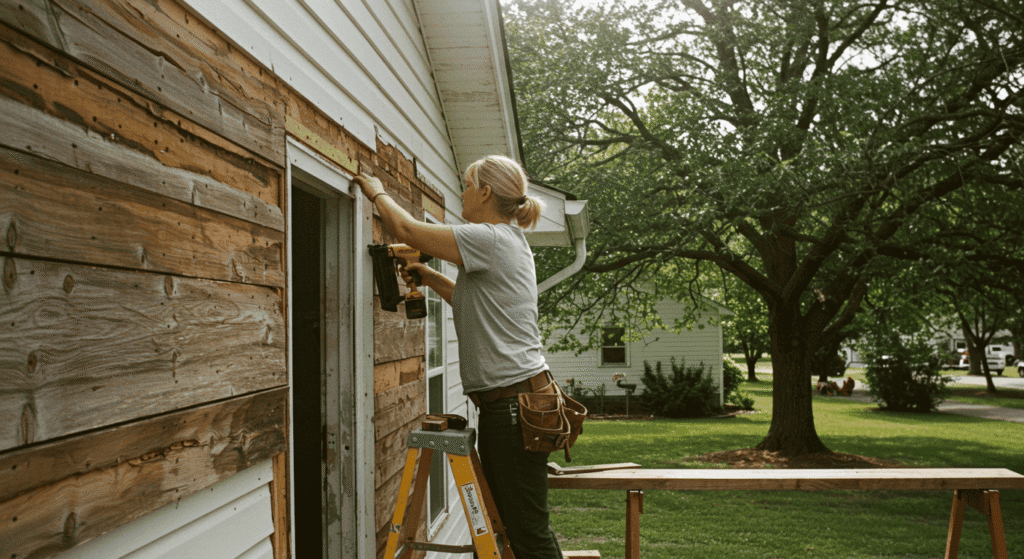
Understanding the importance of home repairs is the first step toward protecting your investment and avoiding unnecessary expenses. Small problems that seem minor today can quickly escalate into major issues if left unattended. By addressing repairs early and maintaining your home regularly, you not only save money but also prevent disruptions that could affect your daily life. This section will help you grasp why timely repairs and maintenance are crucial and how they can save you both time and money in the long run.
The True Cost of Ignoring Repairs
Ignoring minor issues like a leaky faucet or a small crack in the wall may seem harmless at first, but these problems tend to worsen over time. For example, a dripping faucet wastes water and increases your utility bills, while untreated leaks can cause mold growth and structural damage. Repair costs can multiply exponentially when small problems lead to major renovations. Investing a little effort and money upfront for home repairs prevents headaches and expenses down the road.
How Preventive Maintenance Saves You Time and Money
Preventive maintenance is the practice of regularly inspecting and servicing your home to catch potential problems before they escalate. This includes routine checks of plumbing, electrical systems, roofing, and HVAC units. Scheduling maintenance tasks throughout the year can extend the life of your home’s components and reduce the frequency of emergency repairs. By keeping a clear maintenance calendar and following simple care routines, you minimize costly surprises and protect your home’s value effectively.
Quick Fact Table: Common Repairs and Average Costs When Delayed vs. Fixed Early
| Repair Type | Cost if Fixed Early | Cost if Delayed | Time to Fix (Early) | Time to Fix (Delayed) |
|---|---|---|---|---|
| Leaky Faucet | $50 – $150 | $200 – $500 | 30 minutes | Several hours |
| Roof Shingle Replacement | $200 – $400 | $1,000 – $3,000 | Few hours | Several days |
| HVAC Filter Replacement | $20 – $50 | $300 – $1,000+ | 15 minutes | 1+ day |
| Wall Crack Repair | $100 – $250 | $1,000+ | 1-2 hours | Several days |
This table highlights how early repairs generally cost less and require less time, reinforcing why timely attention to home repairs is so valuable. Preventing small issues from turning into bigger problems is one of the smartest ways to save money and maintain a comfortable, safe home.
Getting Started: Essential Tools Every Homeowner Should Have
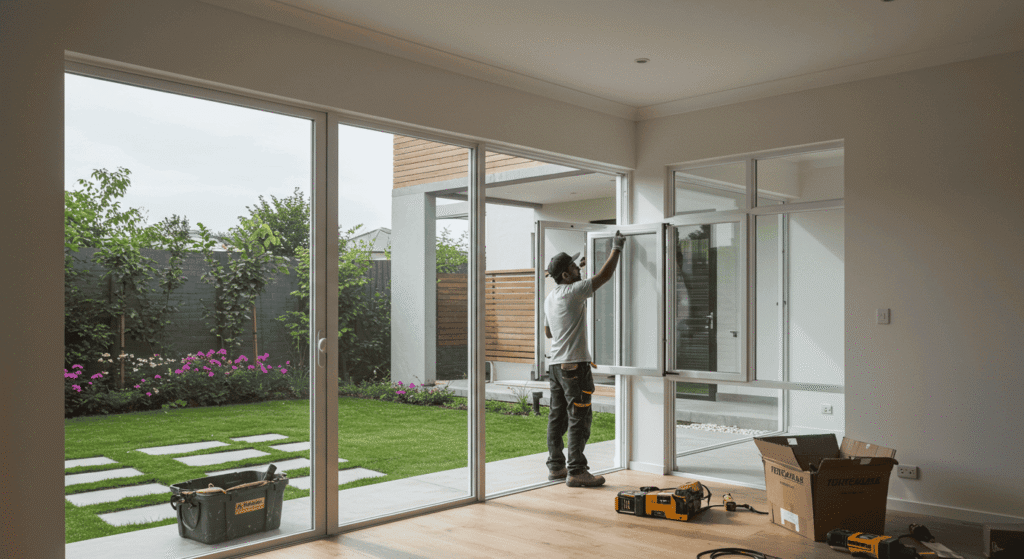
Before diving into home repairs, having the right tools on hand can make all the difference. Whether you’re fixing a leaky pipe or patching drywall, the right equipment helps you work efficiently and safely. This section covers the essential tools every homeowner should keep in their toolbox, along with safety gear recommendations and tips on maintaining your tools for long-lasting performance.
Must-Have Tools for DIY Repairs
Having a basic set of tools allows you to handle many common home repairs without needing to call a professional. Here are some must-have items and their typical uses:
- Hammer: Ideal for driving nails, removing old fixtures, and light demolition.
- Screwdrivers (Flathead and Phillips): Essential for tightening or loosening screws in furniture, appliances, and fixtures.
- Adjustable Wrench: Useful for plumbing repairs and tightening bolts of various sizes.
- Tape Measure: Accurate measurements are crucial for any repair or improvement project.
- Utility Knife: Great for cutting drywall, trimming materials, and opening packages.
- Pliers: Handy for gripping, bending, or cutting wires and nails.
- Level: Ensures your installations are perfectly horizontal or vertical.
- Cordless Drill: Speeds up drilling holes and driving screws for larger projects.
Safety Gear: Protect Yourself While Repairing
Safety should always be your top priority during any home repair. Wearing proper protective equipment can prevent injuries and make your work smoother:
- Gloves: Protect your hands from sharp edges, splinters, and chemicals.
- Goggles or Safety Glasses: Shield your eyes from dust, debris, and splashes.
- Dust Mask or Respirator: Keeps dust, mold spores, and fumes out of your lungs, especially during sanding or painting.
- Ear Protection: Use earplugs or earmuffs when working with loud power tools.
- Sturdy Footwear: Closed-toe shoes protect feet from falling objects or accidental punctures.
Tool Care Tips: Keep Your Equipment Ready for Action
Well-maintained tools perform better and last longer, saving you money in the long run. Follow these simple tips to keep your tools in top shape:
- Clean tools after each use to remove dirt, grease, and debris.
- Store tools in a dry, organized space to prevent rust and damage.
- Sharpen blades and drill bits regularly for efficient cutting and drilling.
- Oil moving parts like hinges and joints to maintain smooth operation.
- Inspect tools periodically for wear or damage and replace parts as needed.
With the right tools and safety gear, plus proper care, you’ll be well-prepared to tackle a variety of home repairs confidently and efficiently.
Home Repair Checklist: What to Inspect and When
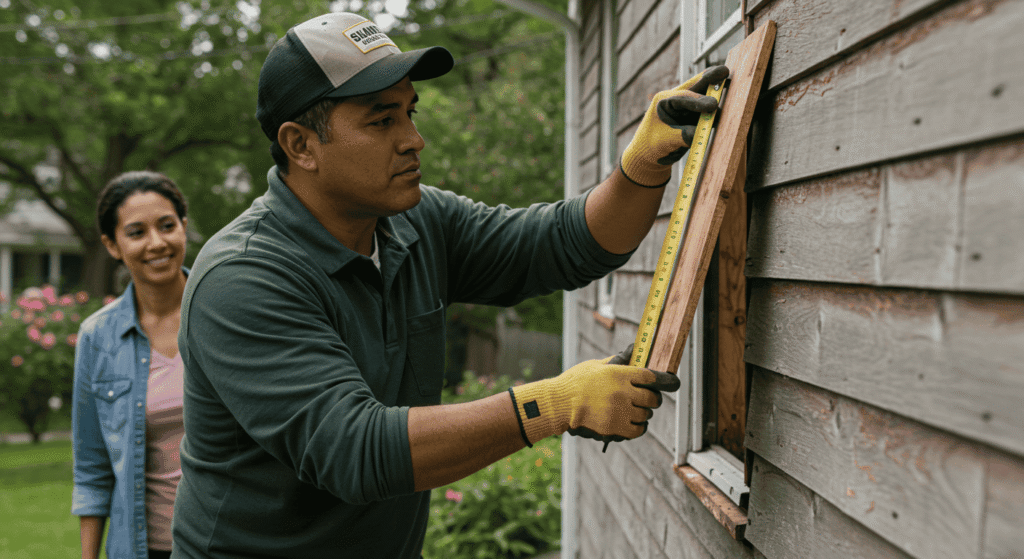
Staying on top of home repairs is much easier when you know exactly what to look for and when to do it. Regular inspections and maintenance help you catch problems early, keeping your home safe and efficient year-round. This section breaks down essential tasks by season, suggests quick monthly checks, and offers an interactive checklist you can save or print for your convenience.
Seasonal Maintenance Tasks (Spring, Summer, Fall, Winter)
Each season brings unique challenges and maintenance needs. Following a seasonal schedule ensures your home is prepared for weather changes and helps prevent costly repairs.
- Spring:
- Inspect roof for winter damage
- Clean gutters and downspouts
- Check foundation for cracks or water pooling
- Service HVAC system before summer use
- Summer:
- Inspect and maintain outdoor plumbing and irrigation
- Check window and door seals for leaks
- Test smoke and carbon monoxide detectors
- Inspect and clean decks, patios, and outdoor furniture
- Fall:
- Clean gutters to prepare for fall rains
- Inspect chimney and fireplace before use
- Winterize outdoor faucets and sprinkler systems
- Check insulation and weather stripping
- Winter:
- Monitor for ice dams and roof leaks
- Inspect heating system regularly
- Look for drafts around windows and doors
- Keep pathways clear of snow and ice for safety
Monthly Quick Checks for Ongoing Home Health
In addition to seasonal tasks, monthly inspections help you identify issues early with minimal effort:
- Test all smoke and carbon monoxide detectors
- Check for leaks under sinks and around toilets
- Inspect visible pipes for signs of corrosion or damage
- Look for signs of pests or rodents
- Ensure doors and windows open and close properly
Interactive Checklist Table: Print or Save for Your Home Repairs
To make managing your home repairs easier, use the table below as a guide. You can print it or save it as a reference to track your progress and plan your maintenance throughout the year.
| Task | Frequency | Notes |
|---|---|---|
| Roof inspection | Twice a year | Spring & Fall |
| Gutter cleaning | Twice a year | Spring & Fall |
| HVAC servicing | Twice a year | Before summer & winter |
| Plumbing check | Monthly | Look for leaks and corrosion |
| Smoke detector test | Monthly | Replace batteries as needed |
| Window and door seal check | Seasonal | Ensure no drafts or damage |
| Insulation inspection | Annually | Before winter |
By following this checklist, you’ll stay ahead of common repair needs, saving time and money while keeping your home in excellent condition all year long.
DIY Home Repairs That Save the Most Money
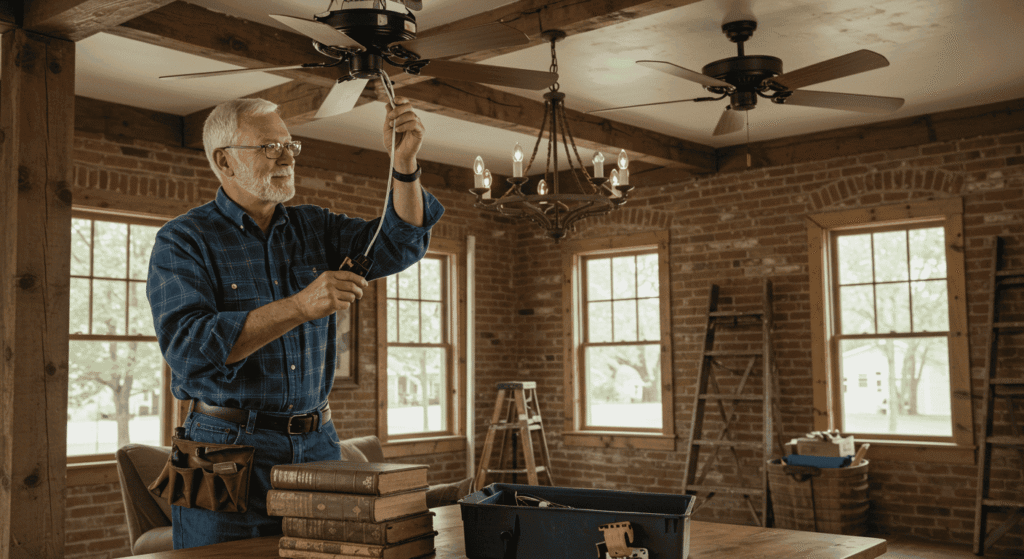
Taking on DIY home repairs can be a great way to save money while improving your living space. Many common issues don’t require professional help and can be fixed with some basic tools and a bit of know-how. This section covers simple plumbing fixes, safe electrical repairs, and easy painting and drywall touch-ups that anyone can do to keep their home in top shape without breaking the bank.
Easy Fixes for Plumbing Issues
Plumbing problems are among the most common home repairs, but many are easier to fix than you might think. For instance, a leaky faucet often just needs a worn-out washer replaced, which takes only a few minutes and basic tools. Running toilets can usually be fixed by adjusting the flapper or float inside the tank. For clogged drains, try a plunger or a drain snake before calling a plumber — these tools can clear most blockages without harsh chemicals. Learning these simple fixes can prevent water waste and reduce your utility bills.
Electrical Repairs You Can Safely Do Yourself
While electrical work requires caution, some minor repairs are safe for homeowners to handle. Changing a light switch or replacing burnt-out bulbs are straightforward tasks that improve functionality instantly. Resetting tripped breakers is another easy fix that can restore power without any tools. However, always turn off the main power when working on switches or outlets, and if you ever feel unsure, it’s best to call a professional. Mastering these simple electrical tasks can save you service fees and keep your home running smoothly.
Painting and Drywall Touch-Ups to Freshen Up Your Space
A fresh coat of paint or a few drywall repairs can dramatically improve your home’s appearance. Small holes and dents in drywall can be patched easily with spackle and a putty knife. After sanding smooth, applying primer before painting ensures a flawless finish. When painting, use painter’s tape to protect trim and achieve clean edges. Choosing the right paint finish for each room (e.g., satin for kitchens, flat for ceilings) helps your walls look great and last longer. These inexpensive updates can boost your home’s style and value with minimal effort.
When to Call a Professional: Knowing Your Limits
While many home repairs can be tackled on your own, it’s important to recognize when a job requires professional expertise. Attempting complex repairs without the right skills or tools can lead to bigger problems, safety risks, or costly mistakes. This section helps you identify the warning signs that a repair is beyond DIY, how to find trustworthy help without overspending, and what to expect regarding costs and timelines when hiring professionals.
Signs a Repair is Beyond DIY
Certain repairs require specialized knowledge or equipment and should be left to trained professionals. Warning signs include:
- Electrical work involving wiring, circuit breakers, or anything beyond changing bulbs and switches
- Plumbing jobs with extensive pipe replacement, sewer line issues, or major leaks
- Structural repairs like foundation cracks, roof damage, or load-bearing wall issues
- Gas-related repairs or installations due to safety hazards
- Problems causing persistent water damage or mold growth
If you feel unsure or notice any of these red flags, it’s safer and often more cost-effective to call a professional rather than risk causing further damage.
How to Find a Reliable Contractor Without Overpaying
Finding the right contractor involves research and careful consideration to avoid overpaying or poor workmanship. Start by:
- Asking for recommendations from friends, family, or neighbors
- Checking online reviews and ratings on trusted websites
- Verifying licenses, insurance, and certifications
- Requesting multiple quotes and comparing them carefully
- Asking for references and viewing previous work if possible
Clear communication about your expectations and a detailed written estimate can prevent misunderstandings and ensure you get fair pricing.
What to Expect in Terms of Cost and Time from Professionals
Hiring a professional usually means higher upfront costs, but the quality and safety of the work can save money in the long term. Depending on the repair type and complexity, costs can vary widely. Simple repairs may be completed in a few hours, while larger projects like roofing or structural work could take days or weeks. Professionals often provide warranties or guarantees on their work, adding peace of mind. Understanding these factors helps you budget properly and plan your schedule around the repair timeline.
Cost-Effective Materials and Techniques for Home Repairs
When managing home repairs, choosing the right materials and methods can make a big difference in both cost and quality. Opting for budget-friendly alternatives and applying smart repair techniques allows you to save money without sacrificing durability or appearance. This section explores affordable materials and strategies to help you get the most value from your repairs.
Budget-Friendly Alternatives to Common Repair Materials
Many traditional repair materials have cost-effective substitutes that work just as well for everyday home repairs. For example:
- Instead of expensive hardwood, consider engineered wood or laminate for flooring repairs.
- Use vinyl or composite siding options as durable, low-cost alternatives to natural wood.
- For drywall repairs, lightweight spackle or patch kits can replace costly replacement sheets for small holes.
- Choose water-based paints and primers, which are affordable and eco-friendly compared to oil-based options.
These alternatives often provide good performance at a fraction of the cost, making it easier to keep your repair budget in check.
Smart Techniques to Stretch Your Repair Budget Further
Beyond materials, certain techniques can help you save money on home repairs without compromising results:
- Do smaller repairs in stages: Tackle larger projects piece by piece to spread out costs and effort.
- Repurpose leftover materials: Use scrap wood, leftover paint, or spare tiles for touch-ups and minor fixes.
- Focus on preventive repairs: Addressing small issues promptly avoids expensive emergency fixes later.
- Learn basic skills: Watching tutorials and practicing simple repairs yourself can reduce labor costs significantly.
By combining affordable materials with thoughtful approaches, you can maintain your home effectively while staying within budget.
Table: Comparing Costs and Durability of Popular Repair Materials
| Material | Approximate Cost per Unit | Durability | Best Use Cases |
|---|---|---|---|
| Engineered Wood Flooring | $3 – $7 per sq. ft. | Moderate to High | Flooring repairs |
| Laminate Flooring | $1 – $5 per sq. ft. | Moderate | Budget-friendly flooring |
| Vinyl Siding | $3 – $7 per sq. ft. | High | Exterior wall repairs |
| Composite Siding | $5 – $10 per sq. ft. | Very High | Long-lasting exterior siding |
| Lightweight Spackle | $5 – $15 per container | Moderate | Small drywall repairs |
| Water-Based Paint | $15 – $30 per gallon | Moderate | Interior and exterior painting |
This comparison highlights options that balance cost and durability, helping you choose materials that fit your repair needs and budget. With the right choices, you can achieve professional-quality results without overspending.
Energy-Efficient Repairs That Pay Off Long Term
Investing in energy-efficient home repairs not only improves comfort but also lowers your utility bills over time. These upgrades often pay for themselves by reducing energy waste and making your home more environmentally friendly. This section covers easy fixes, ongoing maintenance tips, and a cost-versus-savings comparison to help you prioritize repairs that bring lasting benefits.
Simple Upgrades That Reduce Utility Bills
Many common home repairs focus on stopping energy loss and improving insulation. Some effective upgrades include:
- Insulation fixes: Adding or repairing insulation in attics, walls, and crawl spaces keeps your home warmer in winter and cooler in summer.
- Sealing leaks: Using caulk or weather stripping to seal gaps around windows, doors, and vents prevents drafts and heat loss.
- Replacing weather stripping: Installing new weather stripping around doors and windows enhances airtightness, reducing the workload on heating and cooling systems.
These straightforward improvements can significantly cut down your energy consumption and monthly bills.
How Smart Home Maintenance Helps Save Energy
Regular maintenance supports energy efficiency by keeping systems running smoothly and preventing waste:
- Clean or replace HVAC filters regularly to improve airflow and system efficiency.
- Service heating and cooling units to maintain optimal performance.
- Check and repair ductwork to avoid leaks that waste conditioned air.
- Use programmable thermostats to control temperatures based on your schedule.
By staying proactive with maintenance, you extend the life of your equipment and keep energy costs under control.
Cost vs. Savings Table: Energy-Efficient Repairs
| Repair Type | Average Cost | Estimated Annual Savings | Payback Period (Years) |
|---|---|---|---|
| Adding Attic Insulation | $1,000 – $2,500 | $150 – $300 | 3-7 |
| Sealing Air Leaks | $100 – $600 | $100 – $200 | Less than 3 |
| Replacing Weather Stripping | $50 – $150 | $50 – $100 | 1-2 |
| HVAC Maintenance | $100 – $200 | $50 – $150 | 1-4 |
This table highlights how even modest investments in energy-efficient home repairs can lead to meaningful savings, making them smart choices for homeowners looking to reduce costs and environmental impact over time.
Staying Safe During Home Repairs: Tips and Best Practices
Safety should always be a top priority when tackling home repairs. Whether you’re a seasoned DIYer or a beginner, understanding potential hazards and following best practices can prevent accidents and injuries. This section covers common risks, the proper use of tools, and how to be prepared in case of emergencies while working on your home.
Common Hazards and How to Avoid Them
Many home repairs come with risks such as cuts, falls, electrical shocks, and exposure to harmful substances. To stay safe:
- Be aware of sharp tools and always cut away from your body.
- Use ladders properly—ensure they’re stable and never overreach.
- Turn off power and water supplies before working on electrical or plumbing systems.
- Watch out for dust, mold, and asbestos in older homes and wear protective gear.
- Keep your work area clean and well-lit to avoid trips and falls.
Staying alert and following these precautions significantly reduces the chance of accidents.
Proper Use of Tools and Equipment
Using tools correctly not only protects you but also ensures your repairs are done efficiently:
- Read instructions and familiarize yourself with each tool before use.
- Always wear recommended safety gear such as gloves, goggles, and masks.
- Inspect tools for damage or defects before starting a project.
- Use the right tool for the job—improvising can lead to injury or damage.
- Store tools safely when not in use to prevent accidents.
Taking the time to handle tools properly makes repairs safer and easier.
Emergency Preparedness While Doing Repairs
Despite precautions, emergencies can still happen. Being prepared can make all the difference:
- Keep a first aid kit nearby, stocked with essentials like bandages, antiseptics, and gloves.
- Have emergency contact numbers readily accessible.
- Know the location of your home’s main electrical shutoff and water valve.
- Work with a partner when possible, especially on larger or riskier tasks.
- Take breaks regularly to stay alert and avoid fatigue-related mistakes.
By planning ahead and staying mindful, you’ll create a safer environment for your home repairs and enjoy the satisfaction of a job well done.
Mastering Home Repairs for Savings and Peace of Mind
Mastering home repairs is a valuable skill that helps you save money, protect your investment, and maintain a comfortable living space. By knowing when to tackle projects yourself, using cost-effective materials, prioritizing energy efficiency, and staying safe throughout the process, you can avoid costly mistakes and keep your home in great shape for years to come. With the right tools, knowledge, and a clear plan, home repairs become manageable—and even rewarding—tasks that contribute to your peace of mind and financial well-being.

